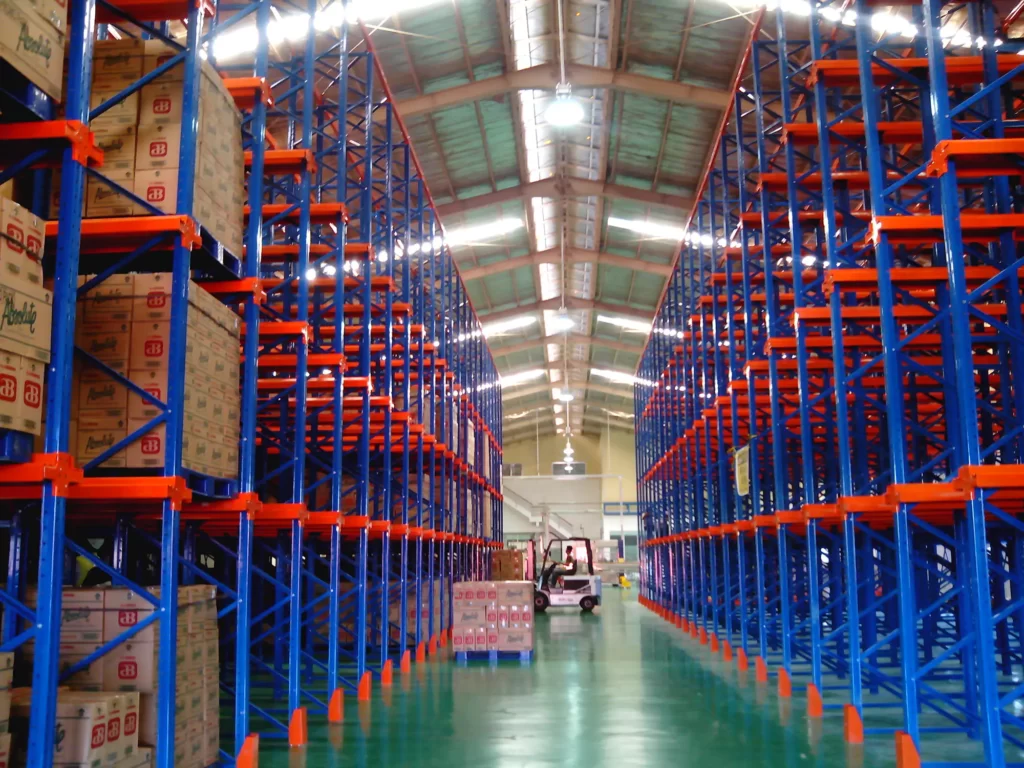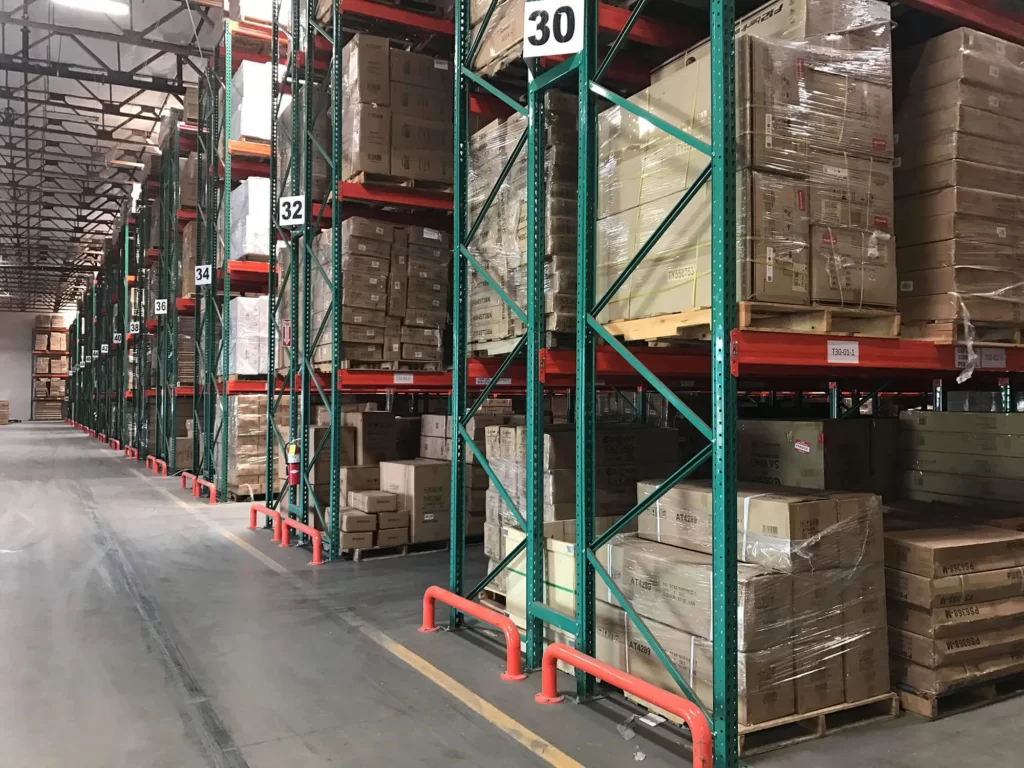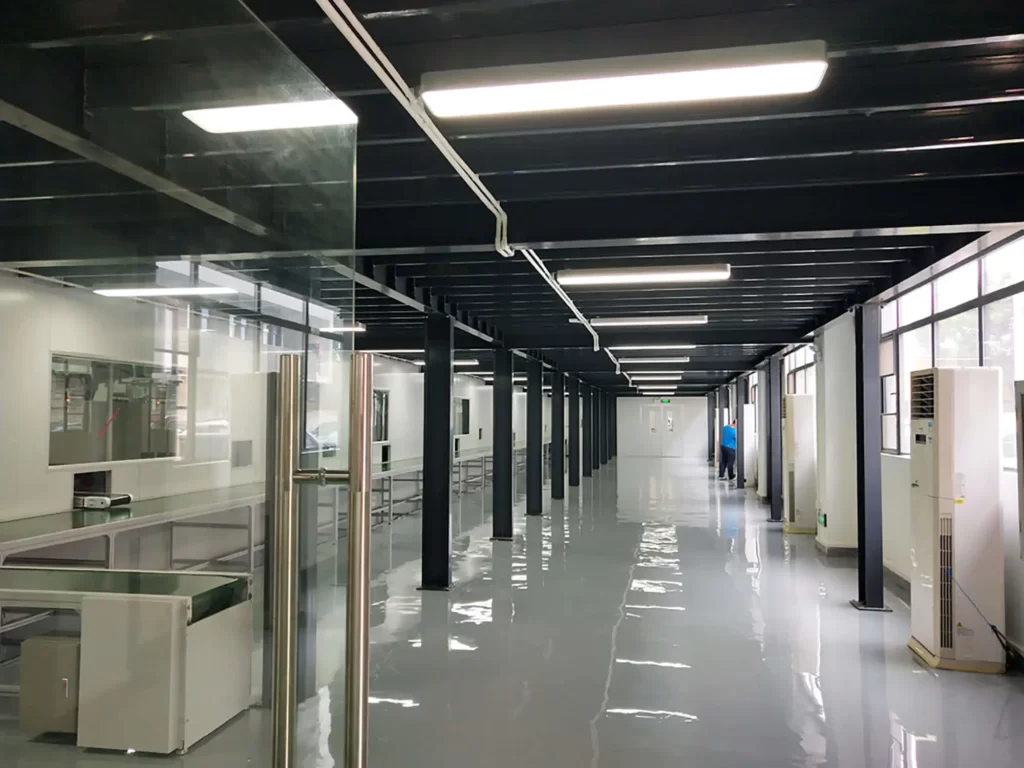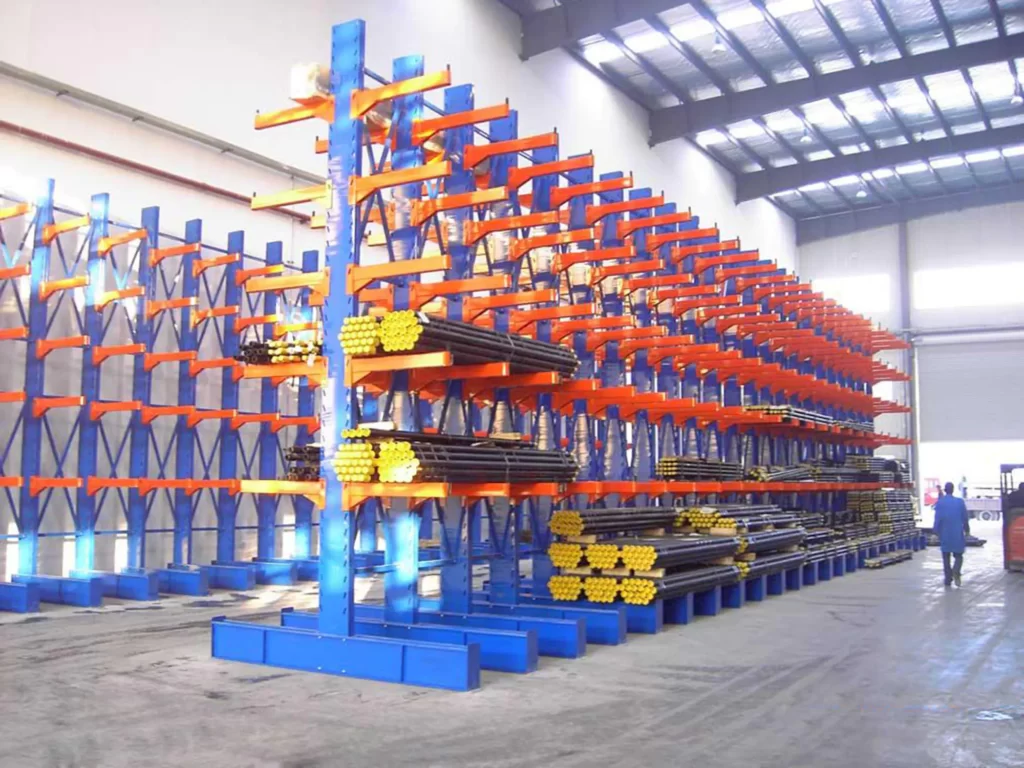Managing a warehouse is a complex task and you can mess up all the operations if you don’t improve or upgrade your warehouse. Therefore, the concept of warehouse optimization was introduced. Warehouse optimization refers to the process of effectively and efficiently improving warehouse operations.
Warehouse optimization covers all aspects like inventory management, layout, storage system, material handling, picking and packing, and transportation system. This is why optimizing a warehouse is just not important but is a need for any organization whether big or small.
We will be discussing warehouse optimization and how it can benefit your organization in several ways, further in this article. So, let’s get started!
What Is Warehouse Optimization?
Warehouse optimization is a process to manage day-to-day business operations within existing resources and space. A warehouse optimization can fix issues like inventory control, shipping delays, and warehouse processes. The basic goal of warehouse optimization is to increase productivity, reduce operational costs, and make your customer happy and satisfied.
A business can utilize the space better when opting for warehouse optimization. It increases the efficiency of its labor force and reduces the risk of any loss and damage of stock. Your business can have a significant advantage over your competitors when you want to fulfill orders faster and reduce lead time.
Six Processes of the Warehouse and Their Optimization
A warehouse storage system involves different steps where optimization is considered important. This process involves different steps to streamline your warehouse operations, which are as follows:
1. Receiving
The first and most crucial step in the warehouse optimization process is receiving. Make sure to verify that the received products are the right ones, right in quantity, in the right condition, and arrived right at the time. Avoiding these rules might cost you later. So, you will need to receive cargo efficiently by clearing the dock areas faster so that the power pallet trucks and conveyors can easily unload cargo.
2. Put-away
The second process in warehouse optimization is put-away. It is the movement of goods toward the warehouse storage system after you have received them. Put-away helps to store cargo faster, your travel time decreases, ensures the safety of goods and employees, space utilization is maximized, and cargo can easily be tracked and retrieved.
3. Storage
The goods are stocked into their optimal warehouse storage location while utilizing the available space in an efficient manner. It can be achieved when the right KPIs are properly tracked. The software can help with calculating the right storage utilization for the right KPIs so that you can determine the storage process efficiently. The right use of storage vertically and horizontally improves warehouse efficiency.
4. Picking
To fulfill customer orders this process in warehouse optimization comprises 55% of the total operating costs. Therefore, using the right technology for picking orders can reduce costs significantly and increase warehouse efficiency. The best picking optimization technology is providing wireless technology. It can help the picking person to scan anywhere it is needed, access the system immediately, and check the picking lists wirelessly.
5. Packing
Packing the picked orders and preparing them for shipment is the warehouse process step. Here you check for any damages in the product before the item leaves the warehouse. To optimize the packing of the products, the use of software can execute tasks more easily. Ensure to take all the necessary data like weight and dimensions of the product. The software can determine which sort of packaging would be enough for this item.
6. Shipping
The final process of the warehouse is shipping goods to customers. A good shipment is one that is successfully sorted, loaded, dispatched rightly to the right customer, and delivered safely without damages and delays. Software, shipping mobile applications, and devices allow you to check on shipments.
Benefits of Warehouse Optimization.
An organization’s logistic cycle is huge in that managers need to assess, improve, and maintain the supply chain cycle. With the right decisions, right tools, and guidance managers can optimize the warehouse operations that will be beneficial for them and the company.
Different managers take different opinions about warehouse optimization policy when we talk about space utilization. For instance, when increasing a space facility, some may see fit to use third-party storage, some may lease additional floor space in some other warehouse, some may partner with a warehouse solutions company, and so on.
Nothing is wrong unless you take the right decisions considering your situation and how it may benefit the company. So, here are some benefits of warehouse optimization.
1. Improve Forecasting
Forecasting provides insights into the sales of what’s coming next. effective forecasting for warehouse optimization can provide accurate inventory insights. It will help see the stocked amount and how much storage space is required. Forecasting helps to provide the list of items that sell best so that the company can take action accordingly.
2. Boost Productivity
An organized warehouse eliminates chaos and mess which enables the employees to locate the picking locations in time. An organized warehouse allows employees to move freely and get fewer injuries. Also, the layout of an organized warehouse sets a tradition of a clean and tidy environment, sets regulations, and follows daily rituals of cleanliness. All these factors contribute to boosting the productivity of the organization.
3. Streamline Operations
Company operates smoothly when operations run without being interrupted. From receiving items to shipping them, the time wasted is decreased. Streamline operations help businesses to meet deadlines without compromising on the quality of products.
4. Enhance Visibility
Warehouse optimization provides complete visibility of inventory. Therefore, it helps to document the items smoothly. You can have insights using RFID tags, barcodes, and serial numbers. It also helps in identifying the items that are in demand and what market needs are.
5. Increase Employee Productivity
Warehouse space can have a great impact on workers. Improving warehouse space can increase employees’ productivity. You can increase warehouse space by assessing the current workflow and optimizing operations. This comfortable environment helps to increase workers’ morale and performance.
6. Improves Organization and Flow
Warehouse optimization requires an organized layout, receiving, shipping, and storing products in pallets as per the requirements of the products, and not overstocking slow-moving items. Improving all these operations helps the warehouse operations in flow. Picking time is decreased and orders can be delivered within the specified time.
7. Saves Money, Time, and Resources
When products are stored more in quantity then ordering them again may require time and energy. You can order quantities in bulk which can save you money. Increasing warehouse space can be done in the existing facility vertically. This way the space will be increased, the workflow will enhance, and safety issues will decrease along with increased productivity.
Strategies for Warehouse Optimization.
1. Warehouse Layout Optimization
Warehouse layout optimization involves designing and organizing the physical layout of a warehouse to improve its efficiency, productivity, and overall performance. The aim is to reduce costs and time associated with material handling, storage, and transportation while ensuring that the warehouse operates smoothly.
We analyze the current layout situation of the warehouse and identify potential flaws and inefficiencies within it. Developing strategies accordingly can improve the flow of goods and material handling.
The company requires warehouse layout optimization for some reasons. These reasons can be when the warehouse becomes too small to handle day-to-day operations, when a company wants to increase the storage capacity, or when introducing new operations.
Optimizing warehouse layout involves a plan that defines two basic agendas:
- Utilize the most available space
- Improve operational throughput
How to optimize warehouse layout?
- A company can possibly design three layout designs; U flow, I flow, and L flow.
- Identify warehouse problems in the logistics facility using WMS (Warehouse Management System)
- Analyze the type of items and their needs because a specific type of product can have specific needs. Like flammable products, pharmaceuticals, beverages, food products, and many more.
- Choosing the right storage system can save you much space and your productivity can be increased. You can go for an automatic storage system or a manual one.
- Now plan and distribute the space area. Like, for goods receipts, storage, order processing, packaging, and return controls are the basic distribution of layout design.
- Implementing yard management to optimize the warehouse. It means monitoring and analyzing activities at loading docks to avoid messing up inflows and outflows of a warehouse.
- Installing software like WMS can help to distribute the goods according to the rules and algorithms to prevent overstocking and manage inventory well.
- Keep space for future growth, more orders, and floor expansion.
To learn more about warehouse layout please read Warehouse Layout Design.
2. Warehouse Space Optimization
Warehouse space optimization refers to the process of utilizing the available warehouse space to its fullest potential while ensuring the warehouse’s functionality and efficiency. The primary objective of warehouse space optimization is to make the most of the available space by minimizing unnecessary wastage of space and improving the warehouse’s storage and handling capacity.
A U.S. report in 2021 shows that a warehouse requires 300 million square meters to keep up with the significant global growth if you run an ecommerce business alone. It might require all the cost that you can’t afford right now. so, the warehouse space optimization concept can help you save your day. Whether you have a small warehouse or a large one, utilizing space and resources can make a difference.
Warehouse space optimization also involves considering critical factors such as space utilization, storage systems, inventory management, and material handling. The primary aim is to improve efficiency, increase productivity, and reduce waste of space and resources.
How to optimize warehouse space?
- Analyze space distribution and identify if there is space not in use
- Store items according to their size and length
- The width of the aisles between the shelving should be reduced
- No overstocking
- Remove obsolete inventory as soon as possible
3. Warehouse Picking Optimization
Warehouse picking optimization refers to improving the efficiency and accuracy of the picking process. Picking is actually the process of selecting the ordered items from inventory and fulfilling the customer’s order and sending it for the shipment process.
Optimizing the picking process will reduce the costs and time that is associated with the picking process. Make sure to select the right items and deliver them to the right destination. Warehouse picking optimization involves:
- Analyze the current picking process
- Identifying potential inefficiencies and flaws
- Develop strategies to improve the speed and accuracy level of picking
How to optimize warehouse picking?
- Start by optimizing the layout which can reduce travel time, leverage vertical space, keep floor space clear, and clean your warehouse regularly.
- Select the right strategy like discrete picking, batch order, zone picking, cluster, robotic or automation.
- Track inventory error rates
- Improve organization with inventory management
- Keep employees trained
- Use the right packaging
- Implement WES (warehouse execution software)
4. Warehouse Slotting Optimization
Warehouse slotting optimization is the process of arranging and organizing inventory in a warehouse to enhance efficiency and minimize expenses. The primary aim is to reduce the time and effort required to locate and retrieve items while using the available space effectively.
When optimizing warehouse slotting, there are multiple factors that must be considered. These include the characteristics of the products, such as their size, weight, shape, and fragility, as well as their sales velocity.
Fast-moving items should be stored in easily accessible locations, whereas slower-moving items can be stored further away. To learn more about the advantages and disadvantages of different storage methods, please read FIFO VS LIFO. The order-picking process should also be considered to ensure that the most frequently selected items are located in the most efficient places.
How to optimize warehouse slotting?
- Keep the warehouse organized and clean
- Assess storage capacity carefully
- For ease of accessibility, rank the slots by priority
- Before assigning slots, it is better to consider the product’s characteristics first
- Think for the safety of employees
5. Inventory Optimization
Inventory optimization refers to the process of effectively managing inventory levels to achieve a balance between product availability and inventory holding costs. The goal is to ensure that the right products are in stock at the right time and quantity while minimizing the expenses associated with inventory.
The elements involved in inventory optimization are demand forecast, inventory replenishment, inventory levels, and inventory storage. To optimize inventory levels, several factors should be taken into account, including demand variability, lead times, supply chain variability, carrying costs, and stockouts.
How to optimize inventory?
Several factors affect the inventory optimization process. These includes:
- Demand variability: it impacts safety stock and reorder points, while lead times affect inventory levels and safety stock requirements
- Lead times: restocking time after the order has been placed can affect inventory levels. So managing it well can optimize inventory.
- Supply chain variability: Supply chain variability can impact inventory levels, and carrying costs such as storage, insurance, and obsolescence should be considered when optimizing inventory levels.
- Carrying costs: the cost of holding inventory until they are sold. It might include storage costs, insurance, and obsolescence costs.
- Stockouts: The cost of stockouts, including lost sales, backorders, and expedited shipping costs, should be weighed against inventory holding costs.
- Reducing excessive stock can help to optimize inventory so that inventory will have the right products to meet customers’ demands well.
- Implement a JIT (Just-in-time) inventory system to reduce inventory levels by evaluating current inventory levels, analyzing demand patterns, determining lead times, and establishing communication channels.
- You can go for EOQ (economic order quantity) analysis.
6. Labor Optimization
Labor cost is the major expense of any organization. Businesses invest back into their companies through the workforce. This cost may include tools, skills, and insights. Optimizing labor costs can benefit an organization and the worker’s productivity level will enhance too.
How to optimize labor?
- Workforce planning can optimize labor costs. It requires assessing labor needs and planning workforce size and skill set.
- Performance management includes performance expectations, providing feedback, and identifying areas for improvement. This way workers will know their job requirements well and efficiently do their jobs.
- Training and development of employees can optimize the workforce’s skills and capabilities which leads to higher production and quality of work.
- Process improvement can optimize labor by analyzing and improving work processes by reducing inefficiencies, eliminating waste, and improving workflow.
- Streamlining tasks through automation can reduce the time and effort required to complete repetitive or manual work, freeing up employees to focus on more complex tasks and improving overall efficiency and productivity.
- Providing flexible work arrangements, such as telecommuting or flexible scheduling options, can improve employee engagement and job satisfaction, ultimately leading to increased productivity and retention rates.
- Utilizing workforce analytics and data analysis can help companies identify trends in labor patterns and areas of high turnover or absenteeism, enabling them to make informed decisions and optimize workforce management strategies for better results.
7. Technology Optimization
Technology optimization is the process of using technology to streamline business processes and increase efficiency.
It helps businesses stay competitive by implementing technology solutions that save time and resources, allowing companies to focus on developing new products or services, improving customer experience, and growing their bottom line.
Technology optimization can enhance data security and protect sensitive information by leveraging technology solutions such as firewalls, encryption, and access controls.
How to optimize technology?
- Automation is a popular technology optimization strategy that involves using software programs or robots to perform repetitive or time-consuming tasks, reducing human error and improving overall efficiency.
- SOPs (standard operating procedures) can optimize emerging technologies
- Use of WMS for helping in optimizing automated picking technologies
- You can use technology for the movement of loads
- Technology can benefit you with automated storage and retrieval system (ASRS)
- Warehouse operations and stock control can be handled well using technology. WMS can help you to coordinate multiple logistics processes.
Warehouse Optimization Challenges.
You can face many challenges when opting for warehouse optimization. The most common challenges are related to errors, inefficient processes, and lack of transparency. These challenges can be overcome using WMS, automated material handling systems, barcoding, and automated data collection.
So, here is the list of challenges that managers or the whole organization face during warehouse optimization:
(i) Inventory Accuracy
When companies do not deploy automation or software then it is hard to get accuracy in inventory. There is little visibility into warehouse racks and inventory cannot be accurately calculated. It may result in overstocking of items and expiration.
(ii) Inventory Location
Inventory location is important when you need to fulfill orders on time. An accurate insight into the inventory location makes it easier for the worker to locate the items and pick them up to deliver them on time. Unorganized inventory leads to delay order fulfillment and slower loading processes.
(iii) Space Utilization and Warehouse Layout
Space utilization plays an important role in warehouse optimization. If space is not utilized properly then you might need more staff to handle inventory and manage it to get the desired results. Whereas warehouse layout is a part of space utilization. They go parallel; therefore, layout optimization is a challenge for a company to keep space utilization in mind and plan accordingly.
(iv) Redundant Processes
Redundant processes happen while handling multiple processes and inventory at the same time. These processes may result in order fulfillment errors, inventory accuracy, and increased labor requirements.
(v) Picking Optimization
When you have too many places for storing items then the picking process can be a challenge. It delays shipment because of the manual processes and inefficient picking systems.
Conclusion
In a nutshell, warehouse optimization is important for all sorts of businesses whether small, medium, or large. The way you maximize the efficiency of warehouse operations and reduce costs will increase your business productivity. Implement different inventory management systems, design layout, go for automation processes, streamline orders, and always look for improvements in your warehouse system. Warehouse management systems, enterprise resources planning systems, and order management systems can help you attain warehouse optimization better.
If you want to know more about warehousing operations, optimization tips, and many other facts about pallet racking, and warehouse systems then visit the best available resource on the internet. You can also contact us via email, 24/7 customer service. Let’s grow together!








